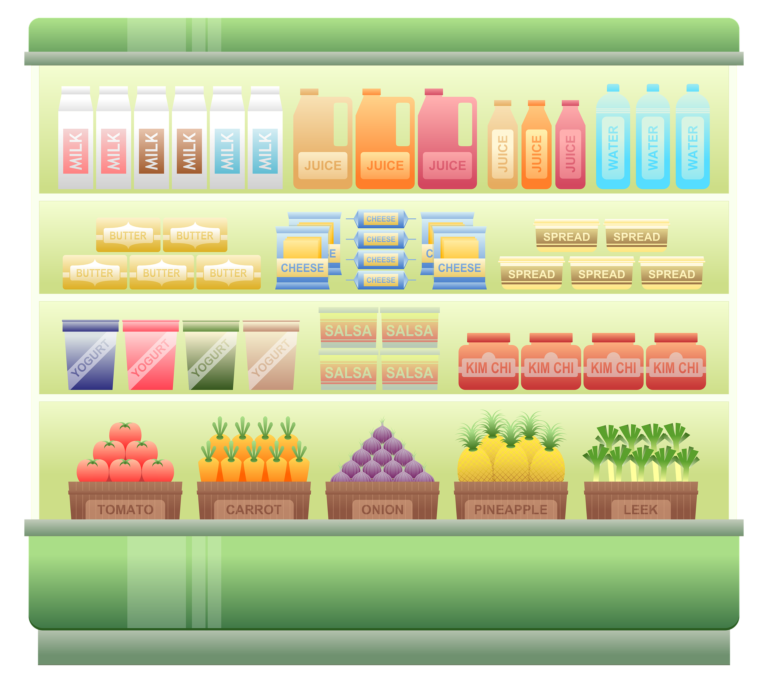The best practices in Food Safety for Chillers are very important. Chillers are an important part of Food processing. Therefore we must ensure that the practices in Food Safety for Chillers are followed throughout the processing lines.
So let’s discuss some important points for the best practices for safe food storage.
1. Delivery temperature of the food in Chiller
As we know the chiller temperature is 0 to 5 degrees Celsius. This is a safe zone temperature range.
When food items are received the food safety officer measures the temperature of the chilled products. If the food item does not meet the standard temperature range it must be returned to the supplier.
Every food supply must be temperature controlled. This is measured using a probe or laser thermometer. It is measured and recorded for FSMS.
2. FIFO in Food Safety
FIFO Stands for first-in-first-out. The golden rule in food storage. It means that the older goods must go out first and the newest stays in. So it is a rotational system used in the food industry storage of raw materials and processed and semi-processed food items.
It is the duty of the food safety officer to ensure that there are no expired or near-expired foods inside the chillers.
If a local authority inspection is taking place a chiller is a must inspected area. Because this is a high-risk area for cross-contamination. So a food officer is vigilant about the expiry of food inside.
Usually, the Food safety officer collaborates with the store in charge or production supervisor to ensure FIFO.
3. Labelling of food
The Food Safety Officer must ensure that covers all items inside the chiller and ensure labelling with with date and name.
This ensures describing the life of the product. Production supervisors usually follow a universal labelling pattern.
Food safety must routinely check for labels inside the chillers. So no doubt discard if there is no label. Following carry out a food incident investigation.
4. Temperature
The food safety officer observes and records the temperature of the chiller every four hours for any non-conformance. (zero to five degrees Celsius ).
Non-conformances can be defined as any deviation from the standard temperature mentioned above. So this means the temperature may have moved to the danger zone. Or else it has fluctuations.
5. Food stacking or arrangement
Food stacking is a very important parameter in chillers. This arrangement is universal to prevent food contamination.
Stack raw food on the bottom rack and the cooked food must be on the top. This arrangement reduces the risk of cross-contamination between processed and non-processed foods.
Foods placed inside the chiller racks must stick to the stacking rule.
6. Deviation of Chiller Temperature
Deviation from the standard temperature of the chiller we must abide by certain important guidelines for the safety of food. They are:
- Inspect the temperature of the food.
- If food is in a safe zone move to another chiller.
- Consume the food if a working chiller is not available; immediately consume or cook at once.
7.Hygiene in Chillers
Practice the following hygiene practices ;
- Meet the Cleaning and sanitation SOPs. Daily cleaning checklist and Deep cleaning checklist to be updated with sanitation procedures to meet the Hygiene Standards.
- Do the Timely daily and deep cleaning in Chillers.
- Go for a periodical micro-swabbing inside the chillers. Consult or hire a Food Microbiologist for accuracy.
There are many types of Chillers such as walk-in Chillers, Blast Chillers and Compact models.
The Food Safety Officer is responsible for the quality and freshness of food inside the chillers. We must ensure that the food safety team is educated with the above guidelines. Food handlers must be trained to use the chiller for safe food handling.
Choosing the Right Food Chillers
The market is flooded with options, each claiming to be the best. To make an informed decision, you need to understand specific needs, the types of food chillers available, and the key features to consider. Let’s dive step by step.
1. Refrigerators
Refrigerators are the most common type of food chillers for homes. They are versatile and come in various sizes. Refrigerators have separate compartments for fresh and frozen foods, making them suitable for everyday use.
2. Freezers and Chillers – Commercial
Freezers and Chillers are dedicated to reducing the temperature of food and are an essential part of any Industry. They are perfect for preserving meats, vegetables, and other perishables for extended periods. ; temperature ranging from 0 to -18 degrees Celsius.
3. Walk-In Coolers
Commonly used in restaurants and large food establishments, walk-in coolers are spacious and can accommodate a vast quantity of food. They are ideal for storing food items in bulk.
4. Blast Chillers
Blast chillers are designed to rapidly cool down food, preventing bacterial growth and maintaining food quality. They are popular in commercial kitchens and the Food Processing Industry.
5. Wine Chillers
Commercial Wine chillers are a must in specific restaurants. They are designed to store and chill wine collection at the perfect temperature.
6. Buffer Tank for Chilled Water System
Buffer tanks form a key component in chilled water systems. It often is used to provide additional volume in closed water systems.which in turn improves temperature control giving a more consistent cooling system operation.
Conclusion
By understanding the types of chillers, and their key features, and considering essential factors, Food Safety Specialists can make an informed choice that aligns with Food Safety. Remember to follow the chiller guidelines regularly to reduce non-conformances during processing. Make informed and periodical services from chiller companies.

